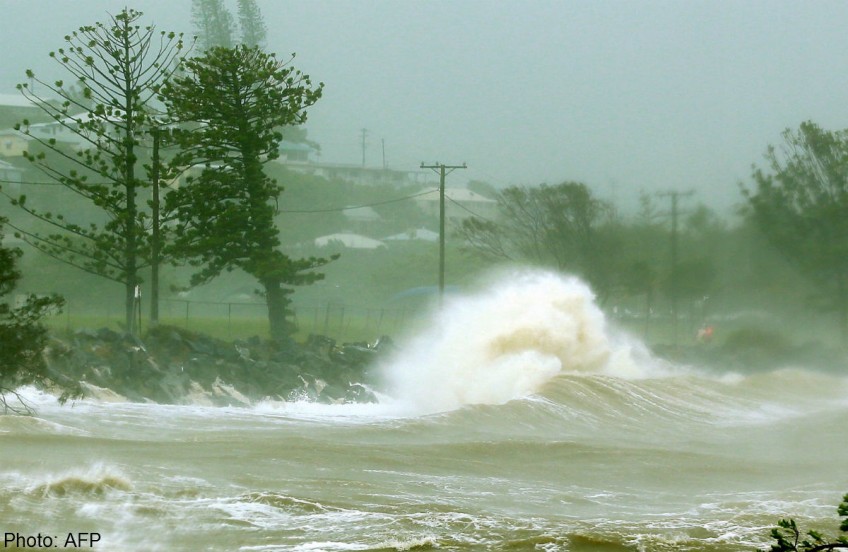Two big cyclones at once, in a first for Australia

YEPPOON - Two severe cyclones pounded Australia on Friday in a "first" for the country, the country's weather bureau said, while experts cautioned it was too early to blame climate change.
Tropical Cyclone Marcia slammed into central Queensland as a category five system, while Lam made landfall in the Northern Territory as a category four just hours earlier.
"An initial check of our database suggests this is the first time that we've had two severe tropical cyclones cross within 24 hours of each other within Australia," Bureau of Meteorology official Adam Morgan told AFP from Darwin.
"In 1986 there were two cyclones that crossed and in 1977 there were two others, but they weren't both severe in those cases." Tropical cyclones are considered severe once they reach category three, with gusts of 165-224 kilometres (100-140 mph) per hour. Five is the highest rating, with gusts of more than 280 kph and capable of wreaking widespread destruction.
Despite the unusual nature of the storms' timings, cyclone history expert Steve Turton said it was too early to say if climate change was a factor.
"It is unusual but it could just be part of natural variability," the James Cook University professor said.
Turton said studies suggested a warming climate could bring more destructive cyclones in the future as there would be extra heat in the oceans and atmosphere, although such systems could become less frequent.
"Some of the research is suggesting that maybe the frequency of cyclones overall may decline in the future in a warmer climate," he said.
"So while intensity is certain to increase just based on the laws of physics, we may actually have less cyclones." The sudden intensification of Marcia, which was a category one on Thursday afternoon before rapidly increasing to a five early Friday, was also unusual, the weather bureau's assistant director of hazard prediction Alasdair Hainsworth told AFP.
"It is unusual that it developed at such a fast rate," he said.
"We were anticipating that it could develop quickly, but it's fair to say the rate of intensification was unusual." Hainsworth said the quick build-up was due to the cyclone being in a "very favourable area of the atmosphere for development", with "very conducive" upper atmosphere conditions to gain power.
"It had very warm sea surface temperatures sitting over the top of very warm ocean and it was just ripe for development." Turton said Marcia was likely to be the worst cyclone to hit Queensland since Yasi in 2011, when homes were ripped from their foundations and crops devastated.
Early reports from Marcia showed trees blown over, power lines down and some damage, while Lam caused severe damage to a number of buildings and houses and left isolated communities with no water, sewage or power.